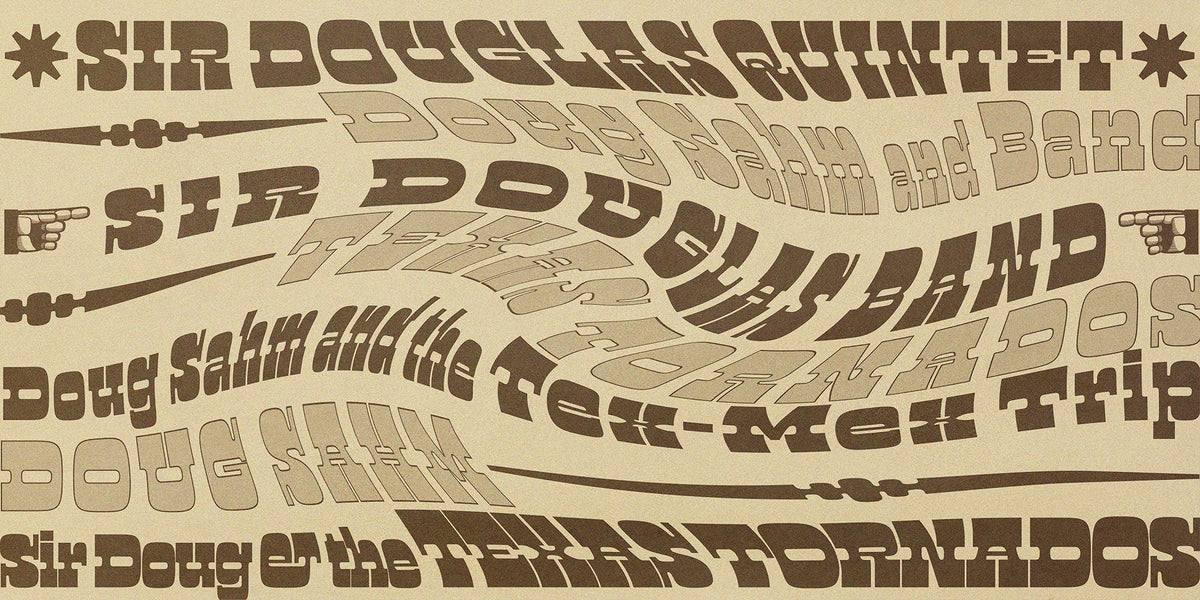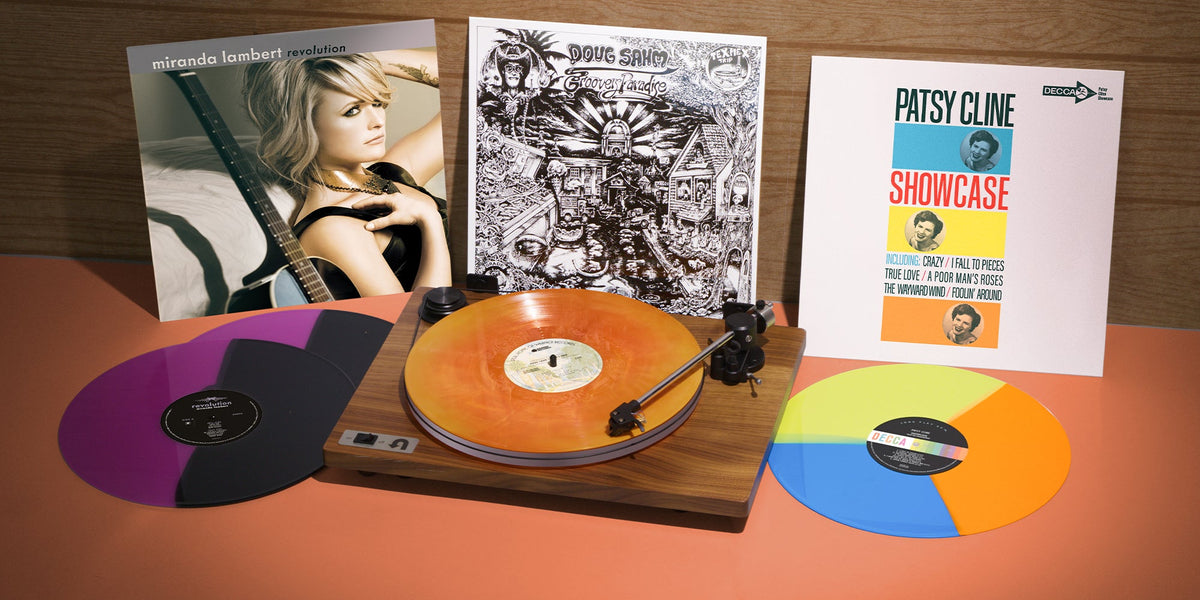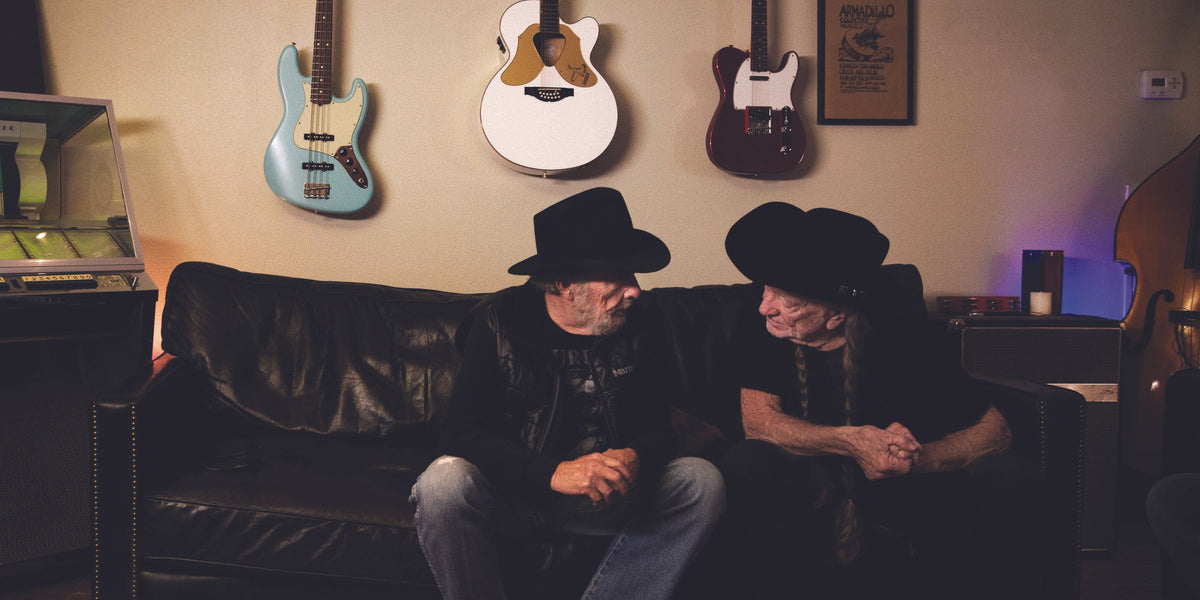Doug Sahm Made Austin into a ‘Groover’s Paradise’
How Sahm helped establish his city as an epicenter of left-field country
As far as country music origin stories go, it’s tough to beat Doug Sahm’s. A Texas wunderkind, he was already a semi-professional musician at age 11, playing fairs and hoedowns around the state. He was already a regular on Louisiana Hayride when he was pictured with Hank Williams before the elder star’s death in 1953. He’d just finished playing a set with Hank, slinging his too-big steel guitar, when, according to Texas Tornado: The Times & Music of Doug Sahm by Jan Reid and Shawn Sahm, someone had the idea to take the duo’s pic with Doug on Hank’s lap. It’s a kind of coronation country stars dream of, a torch-pass from the literal progenitor of popular country as we know it. But for his part, beyond the shows, all Sahm remembered was how bony Hank’s knee was.
That willful puncturing of mythology, that refusal to play it straight or play into people’s expectations, would mark Sahm’s nearly 50-year music career. He never rested on any accolades, and hardly ever kept the same band name on subsequent album releases. He was a repository of all Texas music, playing blues, garage rock, psych-rock, soul, ranchera, jazz, conjunto, western swing, Tex-Mex and everything in between over the course of his dozen-plus LPs. He was both a star (he was the main focus, over Janis Joplin, of a Rolling Stone feature on ’60s San Francisco bands from Texas) and an underground mainstay. He recorded for almost as many labels as he had band names, played on Shotgun Willie and was the leader of one of the first American bands to adopt the sounds of the British Invasion.
But most importantly, he helped establish Austin, Texas, as an epicenter of left-field country, cementing venues like Armadillo World Headquarters and the Soap Creek Saloon as homes of alt-country, turning the city into what he called a "groover’s paradise." Sahm’s Austin, as imagined on Groover’s Paradise, is a city with sunny days, cold beer, good weed and better “cosmic cowgirls” — what later generations would call a place with “good vibes.” Like all of Sahm’s ’70s albums, Groover’s Paradise was a hit in Austin and made a dent hardly anywhere else. But it’s a vital document in both outlaw country and what would become alt-country a decade later. He’s the progenitor of an archetype that has been with country music for 50 years now: the trickster on the fringes, openly thumbing his nose at the country music establishment, refusing to play nice.
Sometime after that meeting with Hank, Sahm witnessed the event that made him into a musician for life. As recounted in Texas Tornado, one night after opening for Lefty Frizzell, a young Sahm witnessed Frizzell leave the bandstand to punch out a drunk person, only to return and start singing on beat. Sahm didn’t have to wait long to be a star; he released his first single when he was just 13. He was invited to join the Grand Ole Opry as an early teenager, but his mother wanted him to finish school, so he passed on the opportunity to take his fiddle and guitar skills national.
In 1965, after trying out various sounds and bands, a 23-year-old Sahm wrote and recorded “She’s About a Mover,” a song based on The Beatles’ “She’s a Woman,” with some friends around his native San Antonio. A music producer friend had the bright idea to not release the song under Doug Sahm’s name, instead choosing to call the group the Sir Douglas Quintet in a bid to confuse listeners into thinking they were British. It worked, and the song became the biggest hit of Sahm’s career, hitting No. 13 on the Billboard chart and leading to tours around the world with The Beatles, The Rolling Stones and The Beach Boys.
Just as the Sir Douglas Quintet were hitting the big time, Sahm got busted for having weed on him at a Texas airport, at a time when Texas law enforcement was making examples out of musicians like Sahm and The 13th Floor Elevators. Sahm did jail time and ultimately moved out to San Francisco to live a more free existence as a ’60s musician. Within months, he was regularly opening for the Grateful Dead and Janis Joplin’s Big Brother and the Holding Company and hanging out regularly with the editorial staffers at a recently launched rock magazine called Rolling Stone. By 1968, Sahm — and his son, Shawn — would be on the cover of the magazine, hailed as a Texas god conquering the concert venues of San Francisco. His LP from this era, Mendocino, is another forgotten classic, an early taste of the blending of all-American music that would be Sahm’s calling card.
When the heat cooled for long-haired musicians in Texas — and thanks to his wife understandably wanting him home in San Antonio — Sahm moved back in the early ’70s. In 1972, he realized the brewing country scene in Austin was making the city more attractive than the staid San Antone, and wanted to break up the Sir Douglas Quintet to start fresh. Sahm jumped to Austin and immediately became a fixture in the clubs that Willie Nelson would make household names thanks to Shotgun Willie. But Sahm was arguably a bigger figure in Austin at the time. He was younger, his music bent a bit more rock — he could be considered a co-creator of Southern rock, if you break it down — and he often shared the stage with conjunto and Latinx musicians who gave his music a more distinctly Texan flair. He’d also been on the cover of Rolling Stone twice by then, well before Willie ever got a shine from the rockist publication.
So, it bears remembering this fact: When Jerry Wexler popped into Austin in 1972 to scout for talent for the country music wing he wanted to build at Atlantic, he signed just two of the city’s talents: Willie Nelson and Doug Sahm. Wexler brought both Sahm and Nelson to New York, but Sahm recorded first; Doug Sahm and Band was the first country record released on Atlantic. A month after its release, Sahm hung out in New York and played on Shotgun Willie. Neither album was a hit, but Wexler gave Sahm another chance at recording a record, Texas Tornado, which he released under the Sir Douglas Quintet name. Both albums are early evolutionary blocks in what would become alt-country, but after Willie also failed to set the world on fire with his second Atlantic LP, Phases and Stages, Wexler shuttered the label’s country arm.
While Willie was off making Red Headed Stranger on Columbia, Sahm signed to Warner Bros. and started a whole new band he called The Tex-Mex Trip. While living in California in the ’60s, Sahm had befriended Creedence Clearwater Revival members Stu Cook and Doug Clifford. In 1974, the two were adrift after their band broke up and lead singer John Fogerty went after solo stardom. While plotting his first move post-Atlantic, Sahm laid down a track with bassist Cook and drummer Clifford at the vaunted Cosmo’s Factory in Berkeley. Sahm called the song “Groover’s Paradise,” and it’d be the mood-setter and title track for his Warner debut. The song would serve as the Polaris for the rest of the record; it’s loose-limbed and ambling, and also somehow both country-fried rock and rock with country flourishes. It’s an Eagles song, if the Eagles preferred weed to cocaine, domestic beers to Heinekens and barbecue to whatever they served at the Hotel California. It’s a Gram Parsons song, with less self-destruction and more wanton partying. It’s all Sahm, through and through.
Produced by Clifford, Groover’s Paradise was recorded in a few weeks at Cosmo’s Factory. In addition to the former members of Creedence, Sahm was joined by the session ringers who give the album its sloppy yet tightly refined vibe. These are guys playing songs for Texas stoners to vibe to by choice, not necessity. Groover’s Paradise is filled with nights of abandon and mornings of regret, two-timers and people who pair off for the sake of a warm bed at night. It’s a place where the gigs run late and rock ’n’ roll soothes your soul, but also where you can take pause on a sunny day to admire the native flowers on a hill.
Every song here was written by Sahm, with the exception of “La Cacahuata (Peanut),” a traditional-sounding Tejano song by Luis Guerrero. “Beautiful Texas Sunshine” captures everything Sahm loves about his home state, including the smile of his partner. “Just Groove Me” and “Girls Today (Don’t Like to Sleep Alone)” capture the raconteur lifestyle from different perspectives. “Her Dream Man Never Came,” a sparse Texas waltz ballad, depicts someone who stayed in the wild Austin party scene too long — the great fear of every person ripping and running into their late 20s. The album’s highlight is its final cut, however. The anthemic, two-stepping “Catch Me in the Morning” captures all the feelings and regrets after a night of drinking. “Catch me in the morning when I’m feeling better / I didn’t mean to be so cold to you,” Sahm sings over a beer-hall piano, before the song-along chorus comes in. It’s the perfect comedown.
For the album’s cover, Sahm commissioned Austin show poster legends Kerry Awn and Jim Franklin to illustrate a bacchanal Austin, the paradise from the album’s lyrics manifested in pen and ink. It would be the only album Sahm made with The Tex-Mex Trip, or the CCR guys, or Warner Bros. for that matter. He was dropped shortly after the album’s release when it failed to make much of an impact on the charts. He made plenty of records in the next 15 years — including ones that stuck to Texas blues or focused on Tex-Mex — but it wasn’t until 1989’s team-up with a Tejano supergroup that Sahm got institutional recognition, winning a Grammy for the self-titled debut of Texas Tornados. In the time between his major-label albums, Sahm had been an early advocate for Roky Erickson — he apparently even financed the demos that became Erickson’s “Two-Headed Dog” — and for an Austin-based guitarist named Stevie Ray Vaughan. He remained, until his death in 1999, a fierce advocate for all Texas music, a true believer in the Lone Star State’s unique history.
Groover’s Paradise is Doug Sahm's love letter not only to Texas but to the city he called home for half his life, which still owes him for making Austin country weird. And for giving space to all the weirdos who came after him.
Andrew Winistorfer is Senior Director of Music and Editorial at Vinyl Me, Please, and a writer and editor of their books, 100 Albums You Need in Your Collection and The Best Record Stores in the United States. He’s written Listening Notes for more than 30 VMP releases, co-produced multiple VMP Anthologies, and executive produced the VMP Anthologies The Story of Vanguard, The Story of Willie Nelson, Miles Davis: The Electric Years and The Story of Waylon Jennings. He lives in Saint Paul, Minnesota.
Related Articles
Join the Club!
Join Now, Starting at $36Pages







